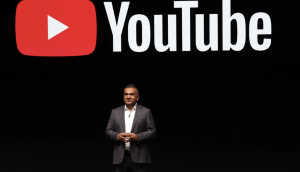As part of the biggest facelift in its 12-year history, the AOL-owned Huffington Post is now known officially as HuffPost across all platforms. The site has also refreshed its logo and overall look.
The site’s new logo boasts a more bold-formatted and italicized font (contrasted with the previous thinner, straight serif font) and a more turquoise-tinged version of HuffPost’s classic green.
HuffPost had already been the name of the site online and on mobile, but it’s now being rolled out officially across the entire brand, according to an AOL spokesperson. The name was chosen because it reflects the history of the site, and also because it’s how the brand is referred to by readers globally.
The new look comes at a time when the site is looking to embrace its increasingly mobile audience, said editor-in-chief Lydia Polgreen. She told MiC HuffPost’s biggest growth area globally has been mobile, with audience numbers growing by four times in the past four years, according comScore data.
The refreshed HuffPost will now include a more prominent video player on the front page (which will include opportunities for video advertising). The site will also introduce a new in-content revealable ad format, which shows ads as readers scroll down the page, as well as additional native content opportunities.
Polgreen said the new logo is meant to have more of a tabloid newspaper feel. “Not in the sense of The National Enquirer, but the working-class newspaper that people pick up for a nickel as they get onto the subway.”
In a letter to readers, Polgreen, who moved to HuffPost this year after almost 15 years with The New York Times, said the site’s editorial team will be expanding the amount of original journalism it does, as well as asking more diverse voices to join its network of contributors. In the letter, she said the changes are aimed at creating a news site that writes for people who feel left out of political, social and economic power arrangements, rather than about them.
Polgreen told MiC that as time goes on, the team will further experiment with new social platforms (such as Snapchat, for which it creates content on the Discover platform). However, she said that because the publication was “born in the pre-social era,” the brand still boasts a large audience that comes directly to the platform.. It intends to keep it this way.
“A consumer that’s on your platform is inherently more valuable than a consumer on someone else’s platform,” Polgreen said.
HuffPost Canada launched in May 2011, making it the first international outpost for the site at the time (it now operates in 17 markets and 10 different languages). The site gets nine million unique visitors a month, according to the latest numbers from AOL Canada (200 million globally).























